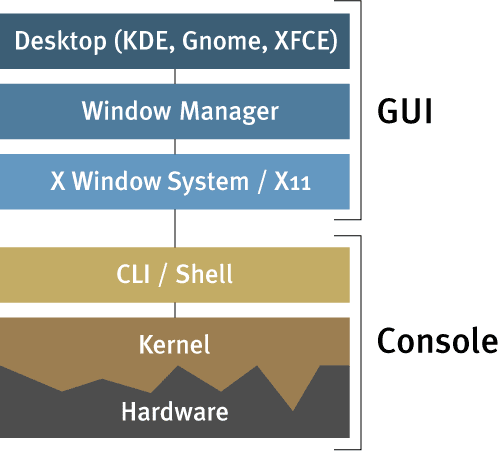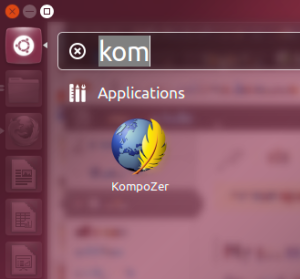
May the Christmas Cheer spread around the world and bring peace, health and wealth to every
 one!
one!I just found this nice site to create fancy fonts!

 one!
one!
What to name it?
This is a constant question we are faced with in daily life. We want to come up with perfect names for our babies. We want to name our animals (pets) and they seem to be happy to have a name! And it seems to be a big thing! Otherwise we wouldn't have naming ceremonies like these. We try to name (rename) our buildings (otherwise what would you call Empire State Building?), streets, cities and countries. (Myanmar or Mumbai is yesterday's story. Mexico wants to rename themselves as Mexico! See here.) And naming is not an easy thing to do. A world recognized music composer in India, Illayaraja, called his symphonic music album "How to Name it" for lack of a better name.
What's that got to do with this?
Java developers (or any developer for that matter) are merely imitating the real world and they too have to face such challenges while naming their programs, classes and objects. We don't want to name (can't) two entities same name. That would cause confusion (Name Collision). To avoid this, we use packages, name spaces, domain etc.
Each "object" tends to have 2 forms in Java world (or .Net, C++ etc) - the class and it's interface! An interface is a class's "public profile" - much like public profile we have in linked-in, what we want other classes to know about this class.
We could say the interface is not unlike a business card or a cover letter we send with our resume when we apply for a job. Cover letter contains exact amount of information that may be of interest to the other party while the resume may have lot more inner details. Now they both are about you, but not the same.
So, what's up with "Impl"?
So, if you are a developer, what would you call the interface and implementation for an object that models a real car?
[caption id="" align="alignright" width="356"] OO interface names[/caption]
OO interface names[/caption]This is not as simple as it seems. There are at least 2 camps. One camp, the Microsoft based camp calls the (implementation) classes by just the name and prefixes their interfaces with "I". To them the Implementation is the real object and interface is it's business card. The other camp (seemingly started by IBM) uses the plain name for interfaces and the (implementation) classes are named with a suffix "Impl" for Implementation. Here the interface represents the abstracted real word object and the Implementation class merely has extra (inner) details that doesn't concern outsiders (other classes). The Java world mostly follows the "Impl" convention.
So there you have it, when you see Java classes named with "Impl" at the end, you know why. End of story, right? No, not really. Object Oriented pundits and purists don't agree. Here is a nice post where the author diisagrees with "Impl" usage. And here is another perspective to it. And it's an ongoing debate. Don't believe me? See here, here, here.
So which way to go?
Naming your class can be a personal choice, but most of us write programs that will be shared with others in the community. That's why conventions and best practices exist. If you are working on a project, set up and follow standards appropriate to your shop.
In some cases, you may not be able to change the "I" or "Impl" in names. Many programs may have some type of interface (protocol) like CORBA, COM, Web Services. In these cases, they generate code (Stubs, Skeletons etc) that you have to based your own code on. Document these and stick to those conventions to avoid any surprises.
Personally, I am OK with using Impl suffix. I work with EAServer which runs both Powerbuilder and Java objects. These objects "talk" to each other using CORBA IIOP. Both Powerbuilder and EAServer tools generate CORBA IDL files which in turn are used to generate stubs and skeletons in Java (or C++). Developers then write Implementation classes for the interfaces generated. The class files generated and the impl classes may end up in the same Classpath and to avoid Name Collision, we have to name implementation classes differently and the convention is to use Impl suffix. This is a convention I am sticking with in my current project.
Reference Links
A note about my "cheesy" cartoon there. While searching for something relevant I found Toondoo where you can make your own cartoon. You can start with a free account. I also use openclipart for some of the pictures in my other posts.
http://isagoksu.com/2009/development/java/naming-the-java-implementation-classes/
http://leshazlewood.com/2009/03/03/java-class-naming-conventions/
http://www.gnu.org/software/libc/manual/html_node/Interface-Naming.html
http://osherove.com/blog/2006/6/14/interface-naming-anything-but-javas-standard-please.html
 Though the word is adopted for the computer fonts, the idea of a serif is not new. Apparently, like any western concept, it has origins in Latin and Roman scripts. But it is not unique to the west either. Chinese and Japanse characters have something similar too. See the wikipedia post for more interesting facts.
Though the word is adopted for the computer fonts, the idea of a serif is not new. Apparently, like any western concept, it has origins in Latin and Roman scripts. But it is not unique to the west either. Chinese and Japanse characters have something similar too. See the wikipedia post for more interesting facts.
So next time, you pick a font, enlarge it and see if it has "serifs". As shown Times New Roman font does and Arial doesn't.
Apart from these two types, we also have Monospace fonts that have constant width for all characters. Courier New is of this type and is typically used by text editor and program (code) editors. "Courier New" uses Serifs to adjust the widths to be uniform. Check it out.
Now you know (the rest of the story)!
 JMeter Response View Gotcha[/caption]
JMeter Response View Gotcha[/caption]
 Oracle Application Express[/caption]
Oracle Application Express[/caption]
SELECT * FROM employee WHERE NOT((employee.dept_nbr IS NULL) AND (employee.dept_nbr = '') );SELECT 'empty string is null' FROM dual WHERE '' IS NULL;SELECT * from employee WHERE NOT((employee.dept_nbr IS NULL) OR (employee.dept_nbr = '') )OR even below SQL:;
--
SELECT * from employee WHERE (NOT(employee.dept_nbr IS NULL) AND NOT(employee.dept_nbr = '') );
SELECT emp_nbr, dept_nbr, first_name || ' ' || last_name || '(' || dept_nbr || ')' AS employee
FROM employee WHERE employee.dept_nbr IN (NULL, 100. 200);WHERE employee.dept_nbr IS NULL OR employee.dept_nbr IN (100, 200);WHERE NVL(employee.dept_nbr, 0) IN (0, 100, 200);SELECT emp_nbr, dept_nbr, first_name || ' ' || last_name || '(' || dept_nbr || ')' AS employee
FROM employee WHERE (employee.dept_nbr IS NULL);
SELECT 1 + null FROM dual;
IF (dept_nbr = 100) THEN
dbms_output.put_line('Inside IF block');
ELSE
NULL; -- Do nothing
END IF;SELECT * FROM employee ORDER BY dept_nbr DESC NULLS FIRST;
com.sybase.jaguar.server.jagadminpassword=<password>
Where the <password> itself is stored encrypted.
grep -i -l "nullpointer" *ls -lt `grep -i -l "nullpointer" *`vi `grep -i -l "nullpointer" *`cp `grep -i -l "nullpointer" *` ~/nullsodecho `date`$> export dt=`date +"%m%d%C%y%H%M%S"`
$> echo "Date is $dt"
$> cp output.log output.log."$dt"
#Where, $> is the shell promptcat file1.zip file1.zip file3.zip > fullfile.zipulimit -aSET MARKUP HTM ON SPOOL ON PREFORMAT OFF ENTMAP ON -
HEAD "<TITLE>My TABLE Listing</TITLE> -
<STYLE type='text/css'> -<!-- BODY {background: #FFFFFF} --> -
</STYLE>" -
BODY "TEXT='#000FF'" -
TABLE "WIDTH='90%' BORDER='5'"
...
spool dump_table.html
...
SPOOL off
sqlplus -S -M "HTML ON" <user>/<password>@<SID> @dump_table.sql > dump_table.html Fig 1. Gnome in Pangolin[/caption]
Fig 1. Gnome in Pangolin[/caption] Linux Architecture - Courtesy Paul Cooper (pgc) on Flikr[/caption]
Linux Architecture - Courtesy Paul Cooper (pgc) on Flikr[/caption]

| Partition | Location | Size | Comments |
|---|---|---|---|
| Partition 1 | /boot | 10GB | |
| Partition 2 | / | 50GB | |
| Swap File | 5GM | Twice the size of memory | |
| Partition 3 | /home | 235GM |
 Ubuntu 12.04 Pangolin Desktop[/caption]
Ubuntu 12.04 Pangolin Desktop[/caption] An icon on the Launch Bar; Triangle on the left indicates running[/caption]
An icon on the Launch Bar; Triangle on the left indicates running[/caption]Apart from these, how you get to things is also different. The Gnome toolbar that had "Applications", "Places" etc disappeared. To get to the applications, you either go through Launch bar and if you don't have it there (Launch bar is menu of icons, so size is limited), then you go to Dash Home by clicking on the icon on the Launch bar and then type the application you need. For e.g., to get Kompozer (HTML editor that's not in my Launch Bar, I have to pull up Dashboard and type some chars to get to the application.

 External Volumes are mounted and show up in Devices List[/caption]
External Volumes are mounted and show up in Devices List[/caption] Virtual Box Application main Screen[/caption]
Virtual Box Application main Screen[/caption]